
2025 is shaping up to be the year of AI agents smart systems that don’t just respond passively, but plan, act, integrate, and complete tasks on your behalf. These are more than chatbots: they’re digital collaborators that can reason, coordinate, and execute multi-step workflows. In this post, we’ll explore 10 AI agents launched (or significantly upgraded) in 2025, break down what they do, and why they matter.
What Are AI Agents — A Quick Primer

Before diving into the list, here’s a quick refresher:
- An AI agent is more autonomous than a typical assistant: it can plan, decide, and take actions (e.g. invoking APIs, navigating the web) to fulfill user goals.
- They often combine reasoning, context/ memory, tool invocation, and feedback loops.
- 2025 is seeing a surge in agentic AI because models now support better reasoning, tool use, memory systems, and multi-agent frameworks.
- Still, there’s a gap between hype and reality: many agents are early, limited in scope, or require tight guardrails.
With that in mind, here are 10 standout agents from 2025.
2025 AI Agent Lineup
Below is a mini-profile of each agent: name, what it does, why it matters, and who it’s for.
1. ChatGPT Agent (OpenAI)
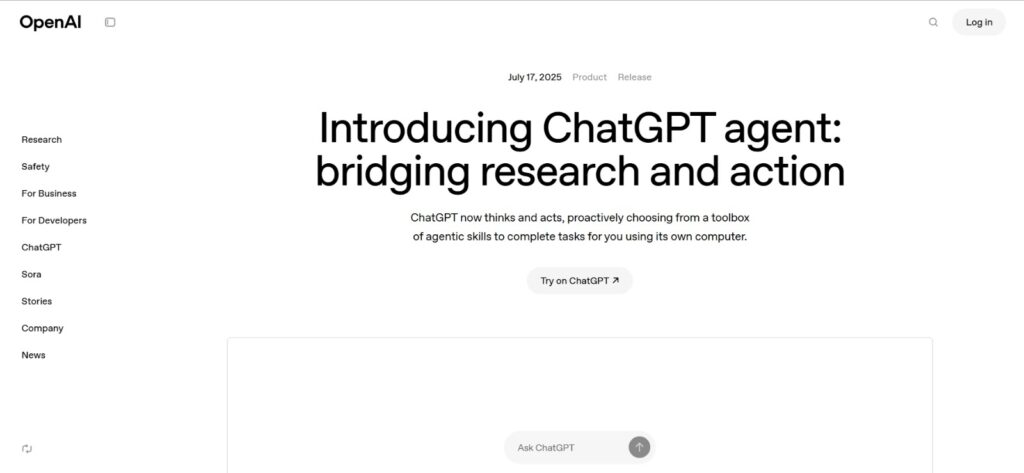
Release / Company: Mid-2025 by OpenAI
Elevator Pitch: ChatGPT that thinks and acts — it can autonomously choose tools and complete tasks end-to-end.
What It Does:
- Coordinates multi-step tasks (e.g. plan an outfit, check weather, order) via its tool suite.
- Connects with apps like Gmail, GitHub to fetch data.
- Internally has a “virtual computer” to run actions.
Why It Matters:
It marks a shift from “assist me” to “do it for me”. It also consolidates many earlier agent ideas (Operator, tool usage) into a unified, user-facing system.
Who It’s For: Professionals, creators, power users who want AI to drive workflows rather than only chat.
Pricing / Availability: Available to ChatGPT Pro / Plus / Team users (region limitations)
2. Operator (OpenAI)
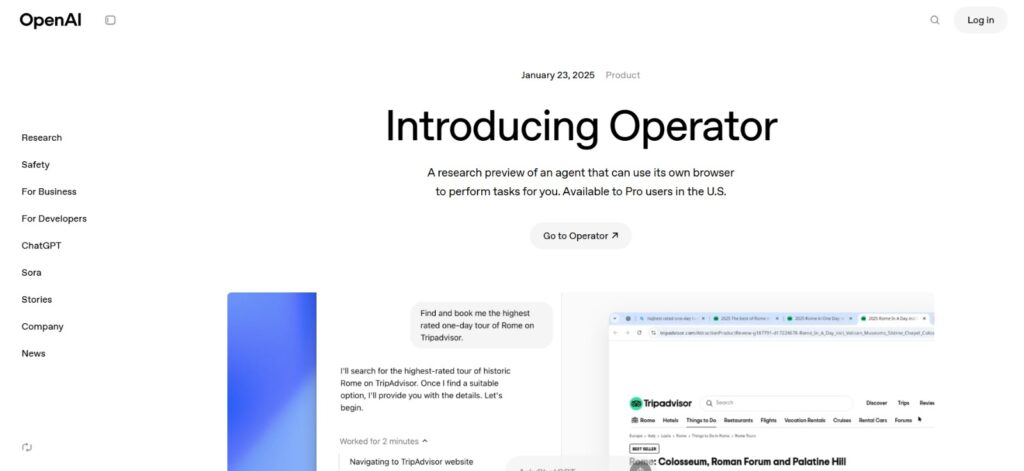
Release / Company: Early 2025, by OpenAI (research preview)
Elevator Pitch: A web-automation agent that can interact with websites on your behalf — filling forms, placing orders, clicking links.
What It Does:
- Automates browser tasks (order, scheduling, data extraction)
- Acts as a “bridge” between user intent and structured web action
Why It Matters:
It’s one of the early demos of turning a natural-language intent into direct web action — a key step toward truly autonomous agents.
Who It’s For: Early adopters, developers, tech-savvy users wanting to prototype automation scenarios.
Notes: It is being phased / deprecated in favor of the broader ChatGPT Agent.
3. Manus
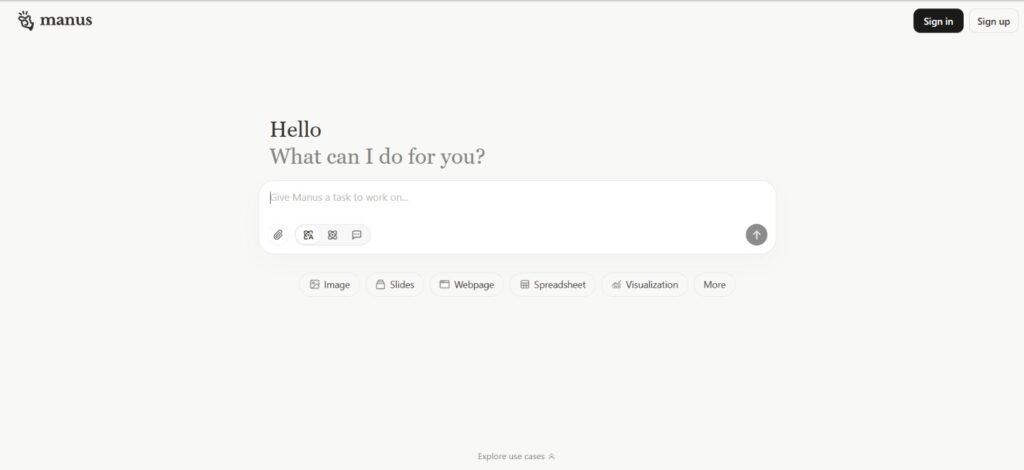
Release / Company: March 6, 2025 by Butterfly Effect (Singapore / China)
Elevator Pitch: A fully autonomous AI agent that can plan, act, make decisions, and carry out real-world tasks with minimal human direction.
What It Does:
- Takes on complex tasks end-to-end (e.g. code generation, deployment)
- Operates with minimal corrections / oversight
Why It Matters:
It’s one of the more ambitious agents positioning itself as “autonomous” rather than tool-invoking. It raises the bar for how little human intervention might be needed.
Who It’s For: Enterprises or ambitious tech teams wanting to test full autonomy and see how far agents can go.
4. AWS Bedrock AgentCore / AWS Strands Agents
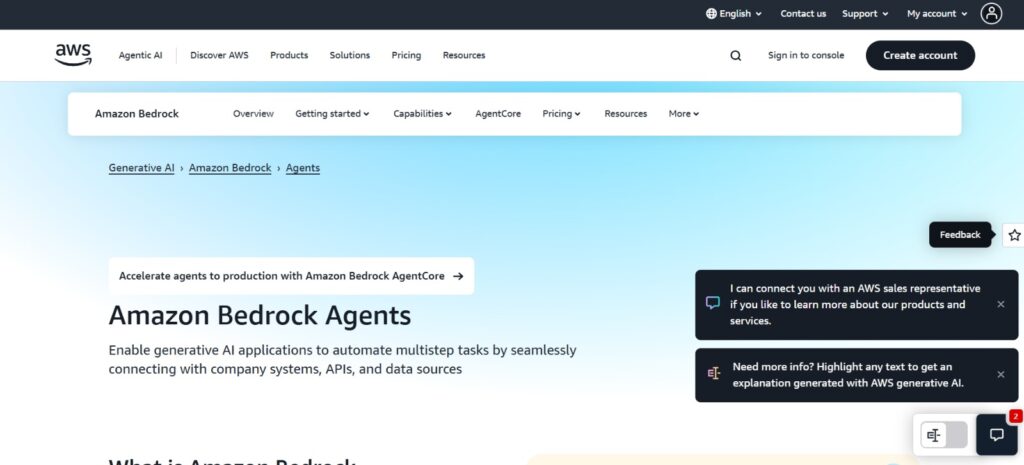
Release / Company: Announced mid-2025 by AWS
Elevator Pitch: A platform / SDK for building, deploying, and scaling AI agents in cloud environments.
What It Does:
- Provides core services (“AgentCore”) to power agent logic, orchestration, security.
- Strands Agents: open-source SDK to help developers spin up agents quickly.
Why It Matters:
Infrastructure is the backbone for scalable agent deployment. AWS’s entry legitimizes agents at enterprise scale.
Who It’s For: Developers, cloud architects, startups building agent-based applications.
5. Salesforce Agentforce 3

Release / Company: June 2025 by Salesforce
Elevator Pitch: The next generation of Salesforce’s digital labor / AI agent system, focusing on visibility, control, scalability.
What It Does:
- Adds “Command Center” for tracking and managing agents’ behavior.
- Improves governance, monitoring, and deployment of agents in enterprise workflows.
Why It Matters:
Enterprise adoption hinges not just on capabilities but governance, observability, control — Salesforce is tackling those challenges head-on.
Who It’s For: CRM users, sales / service teams, enterprises already in the Salesforce ecosystem.
6. Adobe AEP Agent Orchestrator / Adobe AI Agents
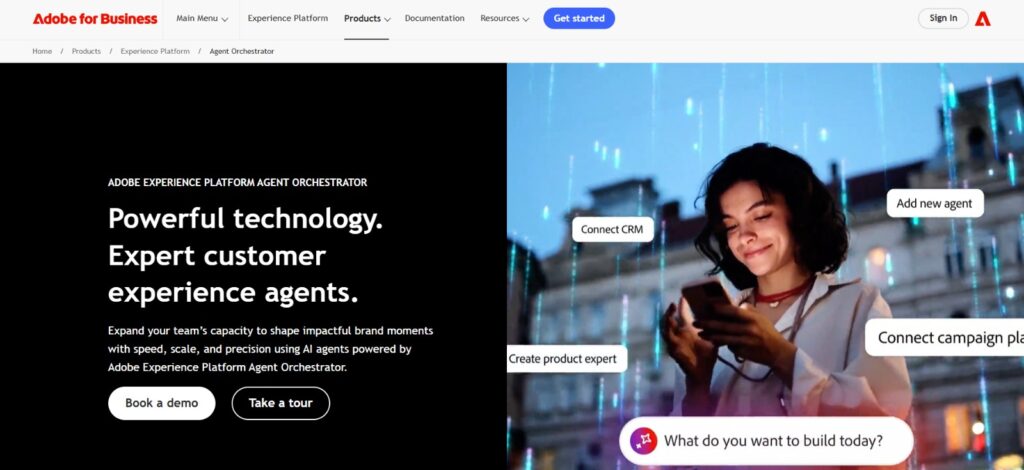
Release / Company: Sept 2025 by Adobe
Elevator Pitch: A suite of AI agents integrated into Adobe’s enterprise stack to automate marketing, content, orchestration across systems.
What It Does:
- Embedded agents in Experience Platform, Journey Optimizer, Customer Data Platform.
- Orchestrates multi-agent workflows, interprets user intent, triggers agents depending on context.
Why It Matters:
It shows how agents will be woven into core business systems (marketing, CX) rather than being standalone tools.
Who It’s For: Marketers, enterprise brands, agencies working in Adobe ecosystems.
7. Amazon Nova Act
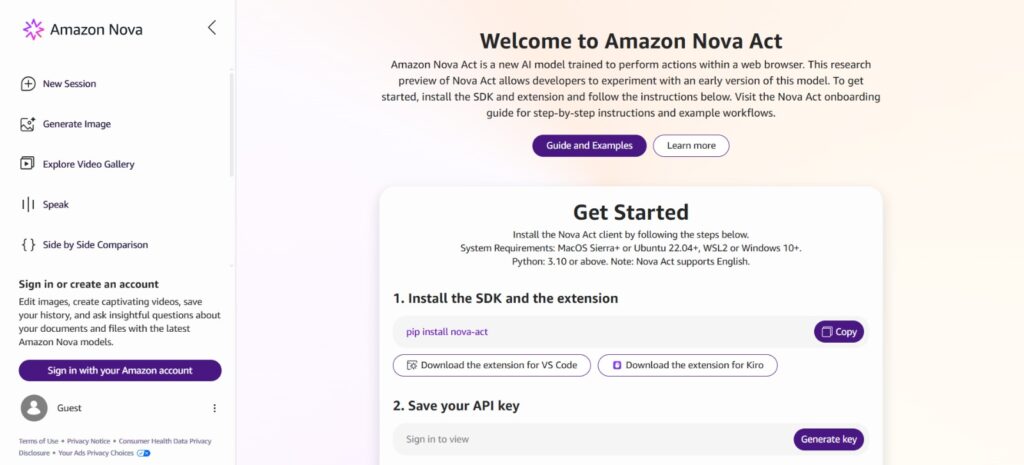
Release / Company: 2025 (preview) by Amazon AGI Labs / Amazon
Elevator Pitch: An “agent” model embedded in browser / assistant context that can perform shopping, web tasks, follow instructions.
What It Does:
- Browses on behalf of user, makes purchases, fills forms, schedules tasks.
- Can obey constraints like “ignore upsell” when buying.
Why It Matters:
It represents how agents may start to blend into everyday consumer interaction (shopping, browsing) rather than just enterprise tasks.
Who It’s For: Developers, Amazon ecosystem users, advanced consumers testing new experiences.
8. GitLab Custom Agent Builder / GitLab 18.4 Agents
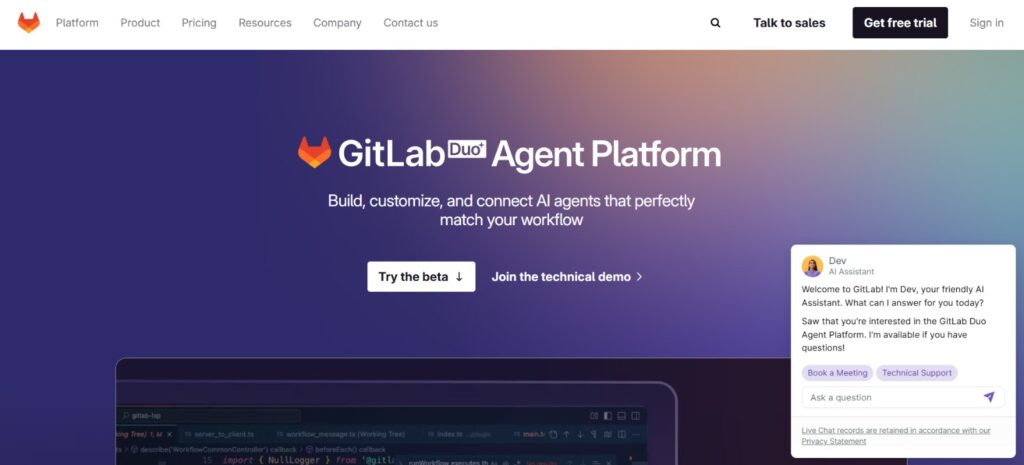
Release / Company: 2025 by GitLab
Elevator Pitch: A system letting users build, share, and deploy custom agents within GitLab workflows (e.g. CI/CD, code navigation).
What It Does:
- Agent creation & sharing from within GitLab.
- Smart model selection and knowledge graph navigation for codebases.
Why It Matters:
Embedding agent logic inside developer workflows magnifies productivity and tight integration.
Who It’s For: Software teams, devops, technical users using GitLab.
9. Kruti (Ola / Krutrim)
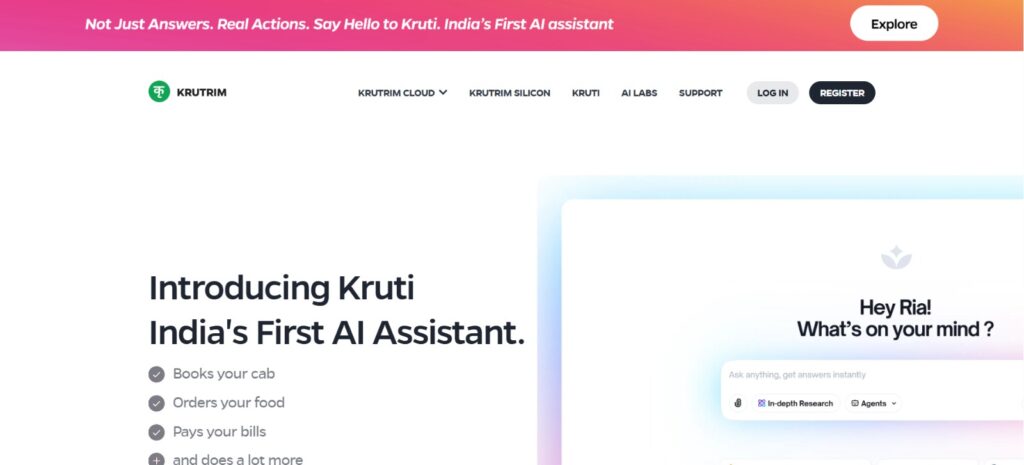
Release / Company: June 2025 by Ola / Krutrim (India)
Elevator Pitch: A multilingual Indian agent that goes beyond chat — booking, tasks, service integration.
What It Does:
- Performs tasks like booking taxis, ordering food, integrating with online services.
- Supports Indian languages and local services.
Why It Matters:
Agents tailored to local markets (language, services) are key to adoption beyond global tech hubs.
Who It’s For: Indian users, service-based apps, companies wanting local AI agents.
10. Paper2Agent

Release / Company: 2025 (academic / framework)
Elevator Pitch: A framework that converts research papers into interactive AI agents — you can query a paper, run its code, and get answers.
What It Does:
- Parses paper + code, builds agent infrastructure (Model Context Protocol) to expose functionality.
- Allows scientific queries, tool invocation, experiments from a natural-language interface.
Why It Matters:
This is specialized, but a fascinating paradigm: making every paper an agent that others can interact with, lowering friction to research.
Who It’s For: Researchers, academics, domain experts, tool builders in science.
Comparative Insights & Trends
From surveying these 10, several patterns emerge:
| Trend | Observation |
|---|---|
| Agent + Infrastructure | Many big players (AWS, Adobe, Salesforce) focus on agent platforms, orchestration, and control, not just one agent. |
| Domain specialization | Agents are tuned to specific tasks — shopping, marketing, code, CX, research — not general purpose alone. |
| Autonomy boundary | Some agents are fully “autonomous” (e.g. Manus), others still need human oversight or permission. |
| Local / language focus | Kruti shows the importance of localization, not just English / US markets. |
| Integration into workflows | Rather than separate apps, agents are being embedded in existing systems (GitLab, Adobe, Salesforce). |
| Research → Agent pipelines | Frameworks like Paper2Agent point to academic → agent translation, making research more interactive. |
We can also see challenges: safety, error handling, trust, user control, and monetization remain unsolved.

Conclusion
2025 is witnessing an explosion of agentic AI: from domain-specific assistants to full-blown autonomous systems, from consumer contexts to scientific tools. These agents hint at a future where AI does not just respond — it acts.







